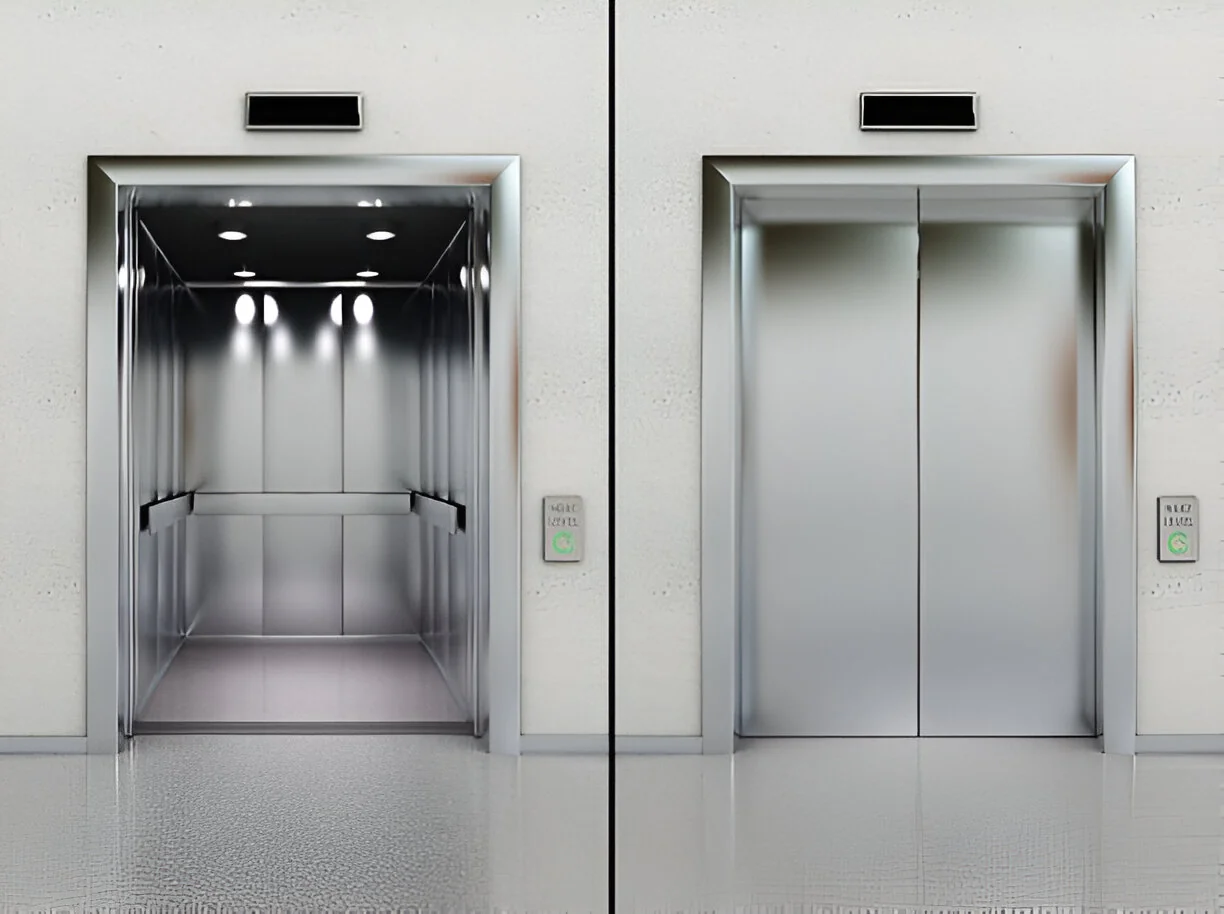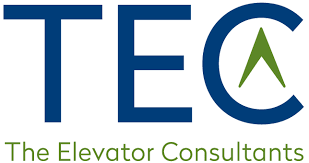In the midst of everything a building owner must do, they must also stay on top of recent trends in state regulations across the U.S. which are putting a stronger focus on one vital aspect: Door Lock Monitoring (DLM). Building owners and managers must understand what DLM is, why it’s necessary, and how to ensure your elevators are compliant with the ever-evolving state laws. Non-compliance can not only result in failed inspections and legal penalties but also endanger the safety of passengers.
In this blog, we’ll break down DLM requirements, highlight key states with upcoming deadlines, explain how building owners can prepare, and discuss the importance of working with elevator consultants to navigate these changes smoothly.
What is Door Lock Monitoring (DLM)?
DLM is a safety system designed to prevent elevators from moving unless their doors are fully closed and locked. It’s a critical feature that continuously monitors the status of both the car and landing doors to ensure they’re in a secured position.
Here are the core functions of DLM systems:
- Continuous Monitoring: DLM keeps track of the position and state of elevator doors in real time.
- Operation Prevention: The system prevents the elevator from operating if the car doors are not properly closed and locked.
- Fault Detection: DLM identifies electrical issues within the door circuits, such as short circuits or bypassed locks, that could compromise safety.
- Failure Mode Response: When faults or bypassed circuits are detected, DLM ensures the elevator remains stationary, preventing dangerous situations like a car moving with open doors.
In short, DLM can ensure that an elevator cannot move unless all doors are secure, protecting passengers from accidents related to faulty or improperly locked doors.
DLM Requirements Across the U.S.
Across the U.S., more states are adopting Door Lock Monitoring (DLM) regulations to enhance elevator safety, especially for older systems. Compliance deadlines and requirements vary widely depending on the region, but the general trend is clear that building owners must ensure their elevators meet DLM standards, often requiring upgrades or modernization to remain compliant.
Some states, such as New York, were early adopters of DLM regulations, requiring all elevators to have fully operational DLM systems as early as 2020. Others, like Florida and Georgia, have more recent deadlines, with full compliance required by 2024 or 2025, depending on the elevator’s age and existing equipment.
In many cases, elevators manufactured after 2000 may already have DLM systems in place or require activation or minor adjustments to meet the latest regulations. However, older elevators, particularly those built before 2000, often require significant upgrades or modernization to install the necessary equipment.
States such as Nevada, Alabama, South Carolina, and Maryland have also begun adopting safety codes, including DLM requirements while providing phased timelines to allow building owners time to comply. For example, compliance periods might extend into 2025 or beyond, particularly if building owners secure alteration permits or can demonstrate a plan for upgrading their systems.
Overall, the trend is clear for DLM whether through new legislation or updates to existing safety codes, states across the country are moving towards mandatory DLM systems to ensure elevators remain safe and operational. Building owners must stay informed of local regulations and be proactive in ensuring compliance to avoid penalties, failed inspections, and potential safety risks.
Other states such as Alabama, South Carolina, and Maryland are following similar paths, with phased implementation periods to help building owners meet compliance requirements.
Preparing for Compliance: What Building Owners Need to Know
If your building is located in one of the states with upcoming DLM deadlines, they should have a plan in place to meet the regulations. Compliance for DLM is one of many mechanism which ensures the safety of the people using your elevators every day. Here are a few steps you need to know to determine if your building meets DLM requirements:
- Understand Your Elevator’s Age and Equipment: Elevators manufactured after 2000 may already have the necessary DLM hardware installed but might need activation or connection to the monitoring system. Older elevators, particularly those built before 2000, may require full modernization, including new door equipment and controllers.
- Schedule an assessment: Get ahead of the game by scheduling a thorough elevator assessment with your service provider or an elevator consultant. This may help you determine whether your system is compliant or if upgrades are necessary.
- Budget for Upgrades: The cost of implementing DLM varies widely. Simple upgrades to activate or connect DLM systems may cost as little as $3,000, to a full modernization which cost is based on the elevator system needing to be modernized. This can be over a hundred thousand dollars. A building owner and manager should have a clear understanding of your elevator’s system will allow you to plan and budget accordingly.
- Work with a Consultant: An elevator consultant can provide a thorough assessment of your elevator systems and help you understand the true cost of compliance. Consultants are experts at navigating local regulations, and they can offer a range of options, from simple system activations to complete modernization plans. An elevator consultant will meet the building’s timeline, budget, and needs.
The Importance of an Elevator Consultant
Implementing DLM can be a complex process, particularly if your elevators are older or if you manage multiple properties. This is where the expertise of an elevator consultant becomes invaluable.
- Accurate Assessments: A consultant can conduct a detailed assessment of your existing elevator systems to determine exactly what needs to be done to comply with DLM regulations. They’ll identify what is really needed for your elevators from a simple activation of existing systems or a full upgrade. The consultant works for you and does not make any money off of an installation.
- Cost Management: Upgrades and modernization can be expensive, but consultants can help you avoid unnecessary costs. They understand the market, the nuances of the elevator industry and know how to negotiate with service providers to get the best deals on equipment and labor.
- Regulatory Guidance: With DLM regulations varying by state, an elevator consultant stays up to date on local codes and deadlines, ensuring that you remain compliant and avoid fines.
- Vendor Management: Consultants can manage the entire process, from obtaining bids from elevator companies to overseeing installation and final inspections.
With the adoption of DLM regulations across the U.S., building owners and managers must take proactive steps to ensure their elevators are compliant. The state’s requirements can be complex and partnering with an elevator consultant can simplify the process, helping you avoid costly mistakes and ensure the safety of your building’s occupants.
If you’re unsure where to start, consider working with an experienced elevator consultant to navigate the complexities of DLM compliance, manage costs, and ensure your elevators meet the highest safety standards.
Frequently Asked Questions (FAQs) About Door Lock Monitoring (DLM)
- What is Door Lock Monitoring (DLM) and why is it important?
DLM is a safety system that prevents an elevator from operating unless all doors are fully closed and locked. It constantly monitors the position and state of the doors and ensures the elevator won’t move if there are any issues with door interlocks or circuits. This system is crucial for preventing accidents caused by faulty or improperly secured doors, enhancing overall passenger safety. - Does my elevator already have DLM, or will I need to install it?
If your elevator was manufactured after 2000, it may already have the necessary DLM hardware, though it might need activation or minor upgrades. Older elevators, especially those built before 2000, are more likely to require significant modernization or new installations to meet current DLM requirements. - What happens if my elevator isn’t DLM compliant by the deadline in my state?
Failure to comply with DLM regulations by your state’s deadline could result in failed inspections, fines, and even shutdown. Additionally, non-compliance is not an option and poses safety risks to passengers, potentially leading to accidents or injuries. It’s essential to be proactive about meeting compliance requirements to avoid these issues. - How much does it cost to implement DLM in my building?
The cost of implementing DLM can vary widely based on your elevator’s age and current condition. Simple activations of existing systems may cost as little as 31,000, while full upgrades or modernization can exceed $100,000 per elevator. An elevator consultant can help you assess the true cost and explore the most cost-effective solutions for compliance. - How can an elevator consultant help me with DLM compliance?
Elevator consultants are experts in navigating local regulations and assessing the condition of your elevator systems. They can help you determine whether your elevators need simple upgrades or full modernization, provide cost-effective options, and manage the entire compliance process. A consultant also ensures that you remain compliant with state codes while avoiding unnecessary expenses.
